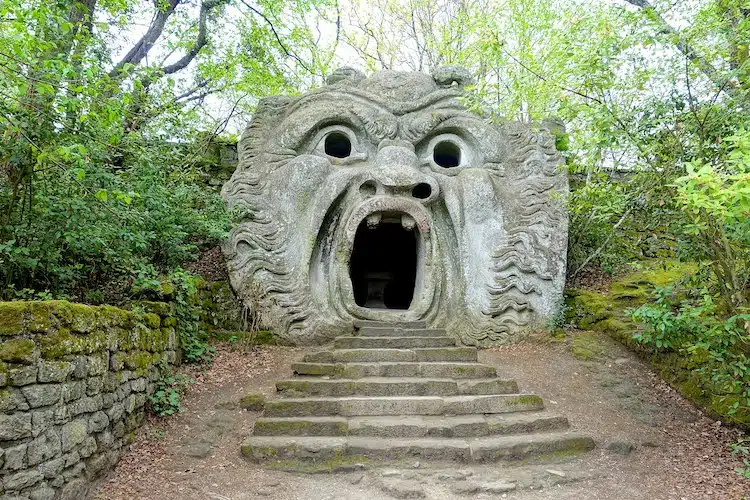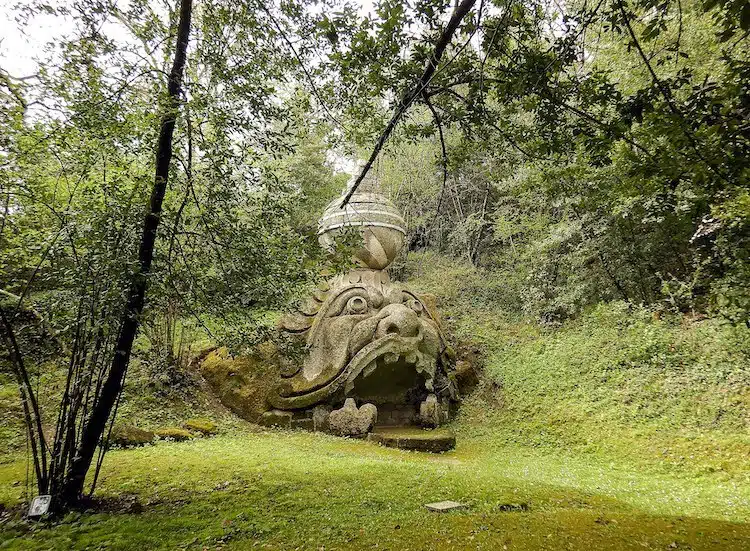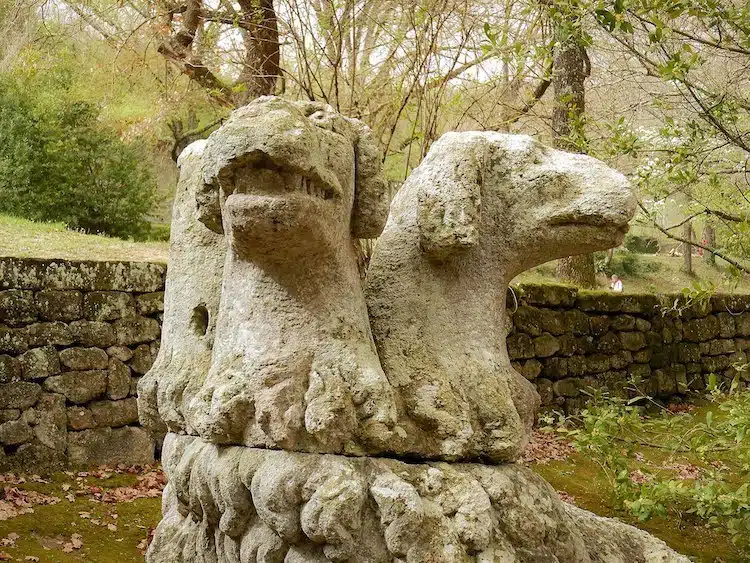
The “Mouth of Hell.” (Photo: Daderot via Wikimedia Commons, Public domain)
Tucked away in the forests and hills of Bomarzo, Italy, you’ll find Sacro Bosco, or as it’s famously known, Park of the Monsters. This 16th-century garden got its nickname due to the dozens of sculptures scattered throughout its seven acres, each depicting mythical creatures that seem to emerge from the earth itself.
Sacro Bosco is thought to be the oldest sculpture park in the modern world, commissioned by Pier Francesco Orsini (1523-1585), the Duke of Bomarzo at the time and an avid art lover. Some historians believe that after the passing of his wife, Orsini created this garden as a way to cope with his grief, filling it with mysterious sculptures that perhaps reflected his own emotions.
Dedicating gardens to loved ones was a common gesture among 16th-century aristocrats, but the Sacro Bosco is far from an ordinary Renaissance garden. Its winding, maze-like paths invite visitors to wander among surreal statues representing figures from the underworld and Greek mythology.
Along the way, visitors meet a statue of Cerberus, the three-headed guardian of the underworld’s gates. The enchanting landscape also features towering statues of Glaucus, the Greek sea god; Neptune, the Roman god of the sea and freshwater; and Echidna, a half-woman, half-snake creature from Greek mythology.
One of the park’s most famous sculptures is Mouth of Hell, a frightening stone face with an open mouth, inviting visitors inside. Orsini reportedly held dinner parties inside the sculpture. “[Its] mouth makes the door, and the windows are the eyes; and inside the tongue is used as the table, and the teeth as the seats,” a 16th-century visitor recalled. “And when one lays dinner with candles lit among the drinks, from a distance it appears as the most frightful visage.”
The mystery of the park remains unsolved, since no written records exist to explain Orsini’s vision. “No receipts, account books, or commission documents survive to tell us about the Sacro Bosco’s creation,” says John Garton, an art historian at Clark University and the co-author of an upcoming book about the garden.
Garton describes Sacro Bosco as “rambling woods filled with surprises, frightful beasts, and ancient ruins.” And while not all the sculptures are terrifying, the art historian believes “some features in the garden are meant to haunt the visitor’s memory.”
Following Orsini’s death in the mid-1580s, Sacro Bosco remained largely untouched for centuries. It wasn’t until after World War II that the garden was rediscovered, attracting the attention of famous figures like Italian critic Mario Praz, Spanish surrealist Salvador Dalí, and French poet Jean Cocteau, who celebrated the garden’s mystique in their works.
Today, anyone with a ticket can visit Sacro Bosco and immerse themselves in the fantastical landscape. If you want to experience its haunting beauty firsthand, check out the Sacro Bosco webiste for more information.
Sacro Bosco in Italy is a 16th-century sculpture garden filled with surreal statues of mythical creatures.

A statue of Glaucus, the Greek sea god. (Photo: Albarubescens via Wikimedia Commons, CC BY-SA 4.0)

A statue of Cerberus, the three-headed guard of the gates of the underworld. (Photo: Albarubescens via Wikimedia Commons, CC BY-SA 4.0)
It was commissioned by Pier Francesco Orsini, the Duke of Bomarzo at the time and an avid art lover.
View this post on Instagram
Art historians believe he created the garden as a way to cope with his grief after the death of his wife.
View this post on Instagram
The park’s winding, maze-like paths invite visitors to wander among surreal statues representing figures from the underworld and Greek mythology.
View this post on Instagram
View this post on Instagram
View this post on Instagram
Watch surrealist artist Salvador Dalí explore the park in 1948.
Sacro Bosco: Website | Facebook | Instagram
h/t: [Smithsonian Magazine]
Related Articles:
10 Best Sculpture Parks Around the World
20 of the Most Famous Sculptures You Need To Know
Sandro Botticelli: The Renaissance Artist Who Became the Master of Mythology Scenes
13 Legendary Constellations and the Stories Behind Them (According to Greek Mythology)
